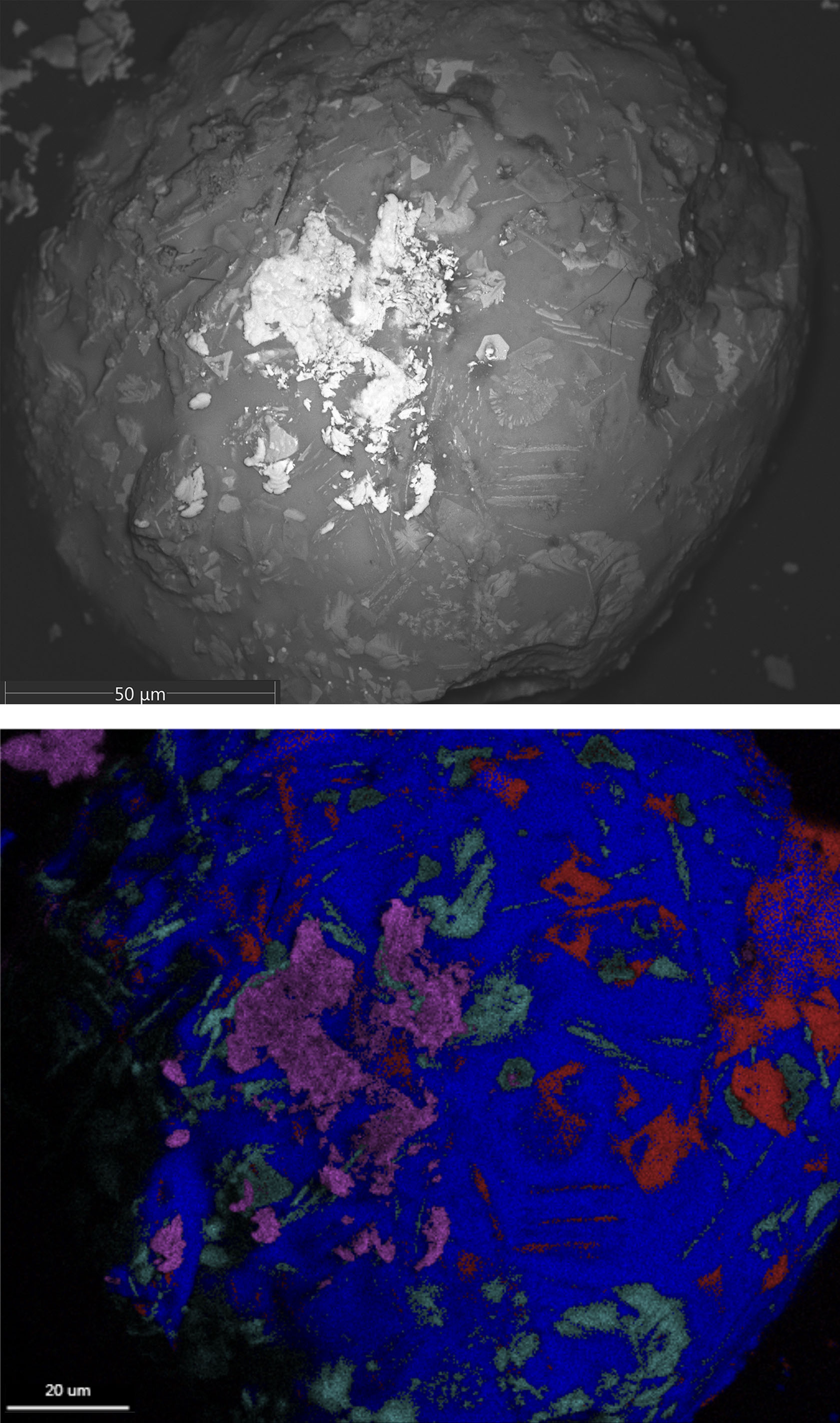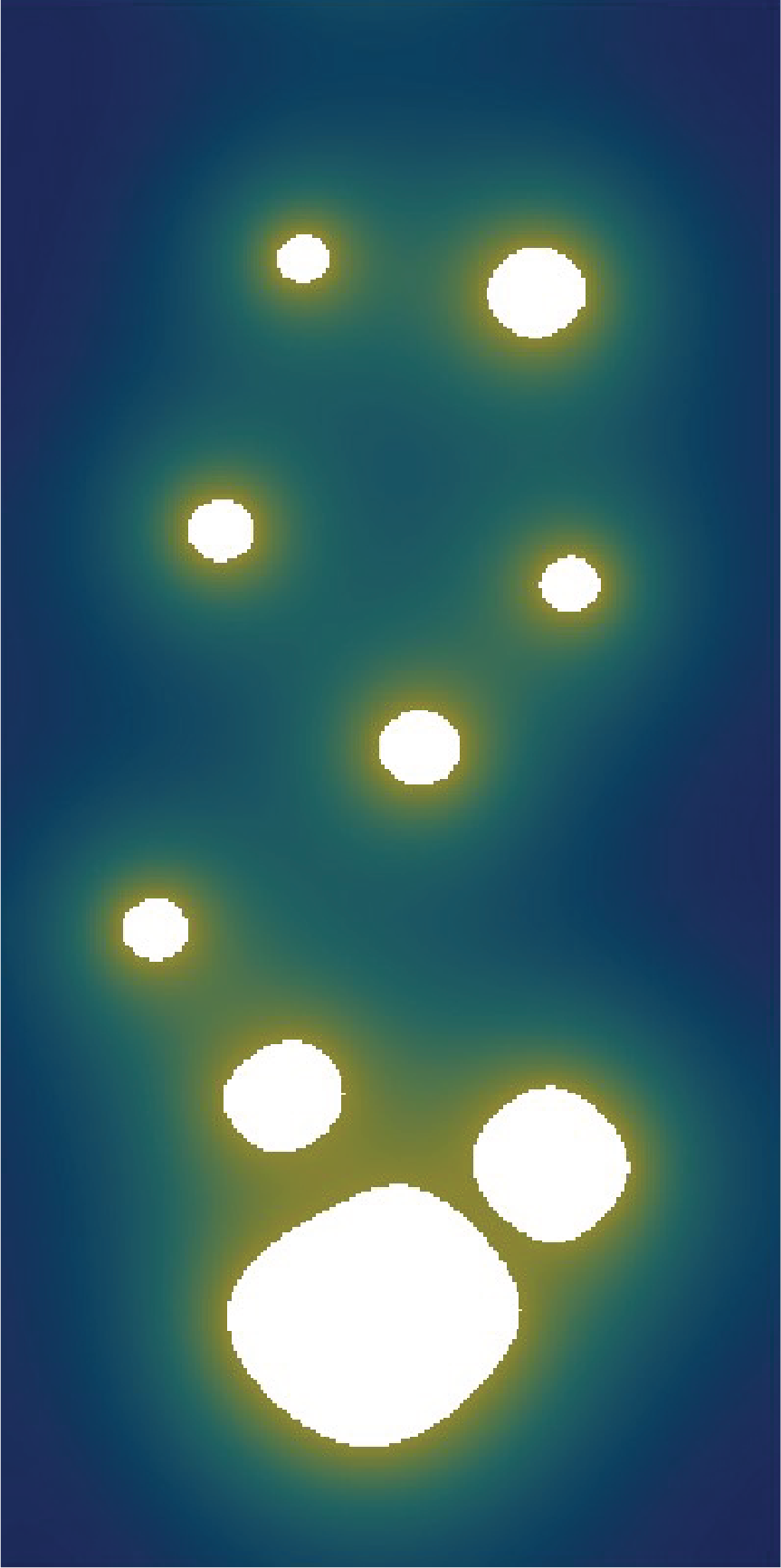02 : Research
I am particularly excited by volcanic processes, and predominantly utilise numerical modelling and sample analysis to answer my research problems. Here, I summarise the problems I am currently involved in:
Constraining Lunar Volcanic Gas Cloud Evolution from Thermodynamic Modelling and Nano-Analysis of Glass Bead Surface Sublimates

Lunar pyroclastic glass beads preserve a record of physical and chemical conditions within volcanic gas clouds in the form of nanoscale minerals vapour-deposited onto their surfaces. However, the scale of these mineral deposits - less than 100 nm - has presented challenges for detailed analysis. Using SEM, TEM, APT, and NanoSIMS, we analysed pristine black glass beads from Apollo drive tube 74001 and found a sequence of sulfide depositionthat directly evidences lunar gas cloud evolution. The deposits are predominantly micromound structures ofnanopolycrystalline sphalerite ((Zn,Fe)S), with iron enrichment at the bead-micromound interface. Thermo-chemical modelling indicates that hydrogen and sulfur were major elements within the volcanic plume and ties the iron gradient to decreasing gas pressure during deposition. This pressure drop may also be consistent with our observed trend of δ34 S depletion. Finally, Apollo 17 74220 orange beads, deposited higher in the Shorty Crater sequence, appear to lack abundant ZnS nanocrystals (Liu and Ma, 2024a), suggesting a change in vapour deposition between orange- and black-glass bead deposition. Together, our results suggest a change in eruption style over the course of a pyroclastic volcanic eruption in the Taurus-Littrow Valley.
Bubble–Melt Separation in Basaltic Magmas: Constraints on MORB–OIB Noble Gas Disequilibrium

High 3He/4He ratios in Ocean Island Basalts (OIBs) are viewed as evidence for sampling of an undegassed primitive mantle source by mantle plumes. However, this does not explain why helium concentrations and the elemental ratios He/Ar and He/Ne in OIBs are an order of magnitude lower than in Mid-Ocean Ridge Basalts (MORBs). This discrepancy, often referred to as the "Helium Paradox", challenges our understanding of mantle degassing processes. Various studies invoke disequilibrium degassing as the solution to this problem [Gonnermann and Mukhopadhyay (2007), Weston (2015)]. Although these models have allowed for better insights into noble gas behaviour during degassing, they yield contrasting results even under similar model assumptions.
In response to these unresolved questions, we have developed a new model that more accurately reflects the behavior of gas bubbles during magmatic ascent. We employ a Lattice Boltzmann method for free surface flows, as it enables us to account for hydrodynamic interactions between bubbles, pressure- and diffusion-driven bubble growth, and secondary bubble nucleation events. Through this work, we aim to offer a more comprehensive framework for interpreting noble gas signatures in MORBs and OIBs, thereby addressing a key aspect of the "Helium Paradox".